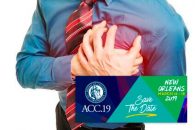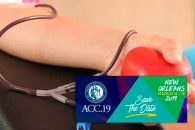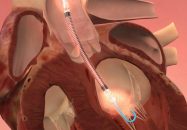Several clinical guidelines differ in their recommendation regarding the prescription of proton pump inhibitors to patients being treated with dual antiplatelet therapy after infarction. In 2015, the European Society of Cardiology (ESC) recommended their use in patients with high bleeding risk; however, in the 2017 update that recommendation became general after the assumption that, for…
EuroPCR 2019 | BASKET-SMALL 2: Drug-Coated Balloons vs. DES in Small Vessels
This angiographic substudy supports the safety of drug-coated balloons in small vessels. Despite better angiographic outcomes, there were eight cases of stent thrombosis among drug-eluting stent (DES) patients, while there was none with drug-coated balloons. In patients with small vessels, using a drug-coated balloon appears safe and comparable to DES, with favorable angiographic outcomes at…
EuroPCR 2019 | REVELATION: Drug Coated Balloons in ST Elevation MI
Drug coated balloons in the context of ST elevation acute myocardial infarction seem safe and feasible under certain circumstances. This single center study is the kickoff to keep studying the possibility of “leaving nothing behind” after primary PCI. This small randomized study revives drug coated balloons to be used particularly instead of stents in young…
Staged Complete Revascularization vs. Culprit Vessel PCI at Long-Term
Staged complete revascularization in patients with acute myocardial infarction and multivessel coronary disease is superior to culprit PCI only at five-year follow-up. The outcomes of this retrospective analysis show the benefit of staged PCI, though it might be attenuated in diabetic patients. Outcomes are consistent with previously published randomized studies. Nevertheless, we should remain cautious…
PCI Right After CABG: How Bad Can it Be?
In-hospital PCI right after CABG is extremely rare, but it does increase morbidity, mortality and costs significantly. It is still unclear what predictors can be modified to prevent these very early angiography and angioplasty procedures in patients that generally leave the OR with visible EKG changes. Graft failure, distal vascular bed quality, technical error or…
ACC 2019 | Having an Infarction at Very Young Age or 10 Years Later Does Not Change Long-Term Mortality
Patients who suffered their first coronary event before turning 40 years old have similar long-term mortality to those who experienced it even 10 years later, according to the YOUNG-MI Registry presented at the American College of Cardiology [ACC] 2019 Scientific Sessions. Secondary prevention must be used aggressively in both young and elder patients. Over more than…
ACC 2019 | SAFARI: Unexpectedly, Radial Approach Offers No Benefits In STEMI
This study was not able to show benefits in terms of mortality or bleeding when using radial vs. femoral approach in patients undergoing ST elevation myocardial Infarction. This small trial does not change things for “radialists” way past their learning curve who already feel confident with this technique. For them, there is no way back.…
Errata sheet regarding the publication “The Impella device questioned in the post-approval studies due to an increase of adverse events”
What was published in our website refers to the original publication by the FDA (Increased rate of mortality in patients receiving Abiomed Impella RP System – letter to health care providers) where, inadvertently, it was excluded from the title that the FDA communication referred exclusively to the Impella RP device. The Impella circulatory assistance system…
Optimal Revascularization Time in Transient STEMI
Patients admitted with transient ST elevation MI and later normalize completely (symptimos disappear before being treated) are those we normally say are “undergoing a non-ST elevation MI”. This is complex, because revascularization time remains nuclear, as is whether to treat them as STEMI or non-STEMI patients. The aim of this study was to determine the…
The Ten Commandments for the Fourth Universal Definition of Infarction
The Fourth Universal Definition of Myocardial Infarction is a document developed jointly by the European Society of Cardiology (ESC), the American College of Cardiology (ACC), the American Heart Association (AHA), and the World Heart Federation (WHF). The Fourth Definition was necessary for multiple reasons, including increasingly higher troponin sensitivity. While troponin obviously does not…
“Troponinitis” or “Troponinemia”: Terms that Trivialize Troponin Elevation Without a Specified Diagnosis
Troponin elevation is a common finding in acute patients admitted by an emergency service, even in the absence of an acute coronary event. There are patients in whom we simply cannot identify the origin of such troponin elevation. Initially, we relied on this marker as an exclusive marker of acute coronary syndrome. In consequence, many…










